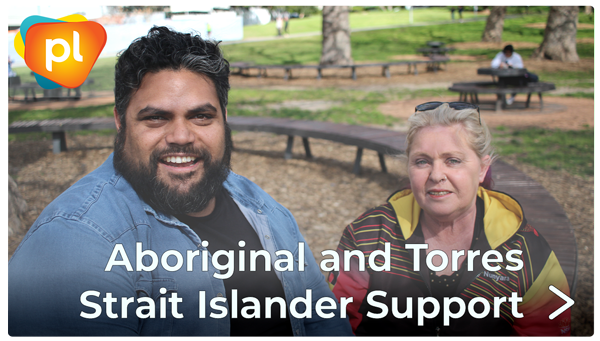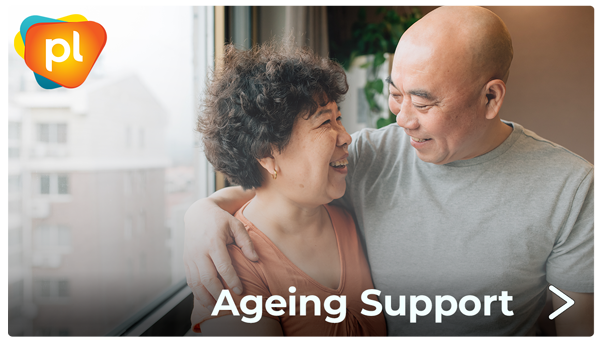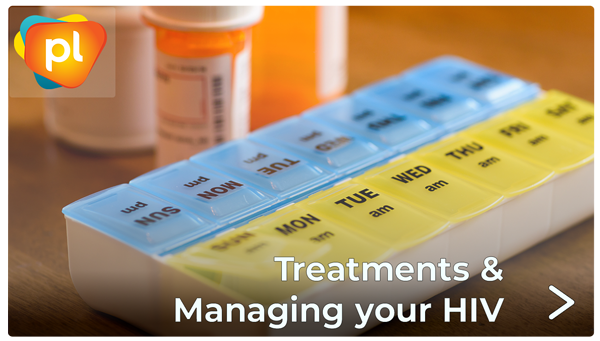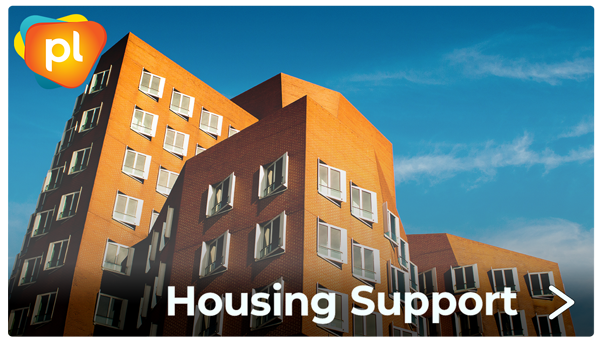1993-1998 /Part 2: Treatment debacle and getting on with life
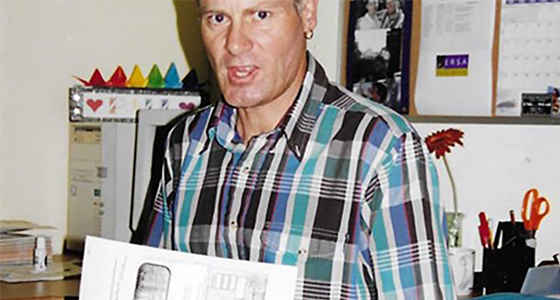
1994-1998: Growing stronger, wellbeing and disclosures
Before 1993 had ended I achieved several things which I needed to do for my health, wellbeing, and mental health after such an emotional time three months beforehand. These included completing the ACON HIV peer support facilitator’s training for gay men. I went on to facilitate seven groups (including two groups for newly diagnosed men) over the next six years.
It was also through the peer support programme that I first heard about PLWHA (NSW) (now Positive Life NSW), and its proposed new project called the Positive Speakers Bureau (PSB) which would commence planning in May the following year, in time for the project’s launch in late 1994. I made inquiries and was accepted as a volunteer to work on the project’s small group to formulate training, policy and generally assist with getting things off the ground. The rest of that as you know is history (see February 2022 edition).
I also attended two of ACON’s series of information night seminars which were run for several weeks learning about the early prevention treatment programme for people living with HIV and how to appropriately disclose our HIV status. As a result, I had a much better understanding about disclosure, health, wellbeing, and lifestyle things that I could use to potentially prevent the onset of worse health and possible progression to an AIDS-defining illness. These included diet, nutrition, exercise, relaxation, and meditation.
I was 38 years old at the time and had never been a great fan of sport and exercise. However, I soon found myself attending positive pump classes at Bondi Olympic Gym and then later aerobic sessions for the LGBTI community at Waterloo. I also contacted the dietician at the Albion Street Centre to have an assessment done for muscle tone and diet. While I did not maintain exercise activities for very long, they set the scene for more gym work at Pride’s Fitness Network, hydrotherapy classes at the Royal Prince Alfred (RPA) Hospital in Camperdown, and participating in St. Vincent’s exercise programme four years later.
I was still attending Sydney Sexual Health Clinic (SSHC) for ongoing follow-up HIV monitoring and counselling when I thought I needed it. I was concerned about the need to disclose my new HIV status to friends, family, and much later, work colleagues. I soon felt comfortable and much more at ease, and before year’s end disclosed to twenty-five people that I felt needed to know. This included my parents and siblings but at that stage that did not include my newly divorced ex-wife and children, for another fourteen months. Most of my disclosures were to straight friends and therefore in effect I was doing double disclosures (sexuality and HIV status). I am happy to say that nobody rejected me and that I received nothing but love, support, and ongoing friendships. The only odd thing is that nobody to date has ever mentioned the state of my HIV health, nor have I wanted to bring it up.
Dr Andrew Pethebridge was my first GP who also specialised in HIV medicine. In early September 1993, after having a sudden onset of laryngitis, my long forgotten upper back and chest acne returned, flaring up with a vengeance. Throat swabs returned negative results for any infections including gonorrhoea or chlamydia. I was given antibiotics which resolved the first of many throat issues over the coming years together with Retin-A (Tretinoin) Liquid which temporarily relieved my cyst-like acne.
I later self referred myself to an acupuncturist in Darlinghurst who prescribed a twice daily course of Chinese herbs together with three sessions of acupuncture which were very relaxing. These worked well until I got quite sick with diarrhoea and needed to quit. In early December I saw a dermatologist in Bondi and that relationship lasted for six months while taking the very toxic drug Roaccutane which could affect my liver or cholesterol levels if not correctly monitored. I needed additional regular blood tests to ensure that did not happen. Roaccutane was successful despite my liver function tests (LFTs) becoming slightly elevated at the end of the treatment. Unfortunately, it was not long before I was regularly returning abnormal LFTs which were causing my doctors and myself a lot of concern. I then needed several ultrasounds and five liver biopsies over the next ten years.
The last thing I did in 1993 was complete the co-purchase of a 100-year-old federation house on the St Peters flight path with the biggest avocado tree I had ever seen in its backyard (I hated avocados at the time).
1994-1998: Research trials and tribulations
Work, social life, volunteering, the new house and frequent doctor and specialists’ appointments kept me on my toes, and I tended to throw myself whole heartedly into these activities while trying to not overly think about HIV until it was suggested I was eligible to participate in a HIV research trial.
In early February 1994, I met Nicholas who moved in, and we became lovers for the next five years until breaking up during the first week of our six-week European holiday with friends Jon and Tony. In March, my home co-owner Brandon mysteriously disappeared and moved out, and this then caused the very nasty and stressful process for me needing to re-finance to purchase his share of the property.
In late April 1994, after deliberating for some time after discussions with Andrew Pethebridge and Alan Walker from the Community HIV AIDS Trials Network (CHATN) over the previous couple of months, I decided to participate in the year-long research trial using an experimental therapeutic vaccine called P24, with or without Zidovudine (AZT), to assess the safety of the vaccine in humans as a future treatment option. This required my attendance at Andrew’s surgery in Bondi at regular intervals (a total of fourteen visits over the year) to having six immunisations at four weekly intervals and taking two capsules three times daily over the next six months.
Additionally, I had to have six cell mediated immunity (CMI) skin tests bi-monthly to monitor my immune response. Alan used a disposable plastic applicator consisting of eight sterile test heads (little needles) preloaded with seven delayed hypersensitivity skin test antigens. The trial commenced in June 1994, two weeks after the Roaccutane experience, and was the first of my participation in fourteen more research studies/drug trials over the next twenty years. P24 was a huge commitment which resulted with nothing more than boosting my immune response and not increasing my CD4 count or viral load (VL). My CD4 count at the beginning of the trial was 780 and at trial’s end had dropped to 299.
After much anguish, the hardest double disclosure was to my children, Julie (13) and Phillip (11) in mid-October 1994 while they were playing competition baseball in Campbelltown. The location and timing were not ideal, but it was the best choice at the time. Both kids were visibly upset and shocked at my news. Julie told me that it was obvious to them that I was gay because of the friends I associated with, my change of hair colour and earring. When I asked them if they knew what HIV/AIDS was and its possible health outcomes, their response was they understood what I was telling them, and they were taught about sexuality and gender issues including sexual health/HIV as part of their Personal Development Health and Physical Education (PDHPE) curriculum at school.
Their mother, Elaine, phoned me later that night to ask if I had good support, and to also say I should not hesitate should I need any help in the future as she and the kids would always be there for me (it was the nicest she’d been to me for three years) She was also happy about my coming out. The kids and I (and their families) remain close to this day. Unfortunately, Elaine was tragically found dead after being home alone with her two dogs for three days in 2014.
In February 1995 I wanted to also provide support to somebody with HIV who needed emotional support of the sort I received in 1994, and then applied to do the Ankali training which was conducted over six days and nights. I found myself disclosing to forty-three people at this training on the first day and their response to that was amazing. I went on to provide emotional support to two clients.
In July 1995 I commenced monotherapy with AZT and by the end of November 1997 my HIV antiviral drug regimens were changed ten times due to experiencing a variety of side effects while becoming resistant to most HIV medications available at the time, while my LFTs continued to rise alarmingly with ongoing investigations failing to find a cause. Three weeks later, I had a minor procedure to excise a small wart which had grown on the bottom of my uvula in the back of my throat. This turned out to be my first and only ever incidence of discrimination by the staff involved in the procedure. I did all the usual things that occur when visiting a service for the first time, including bringing the referral letter, completing personal particulars, and providing medication information.
What occurred next was nothing short of bizarre. The specialist discarded the referral letter before the procedure and did not read it until the procedure was fully completed. He then asked, “What are you taking AZT for?” I replied, “I am HIV positive.”
At that point staff attending to me went into panic mode with both nurses flying out of the room with the specialist calling after them telling them to make sure they correctly wash their hands and sterilise the instruments. In the adjoining room I overheard somebody whispering to other staff “He’s HIV positive”.
I remained where I was sitting without any further verbal contact with anyone, and was made to feel very embarrassed and humiliated. To make matters worse, the specialist did not practise universal precautions during the procedure. To save face, the specialist told his receptionist not to bill me.
1996-1998: Community, health and protease inhibitors
My GP referred me to Dr Andrew Carr at St. Vincent’s Immunology Department in May 1996 to assess me for compassionate access for the HIV antiretroviral drugs 3TC and D4T. This was approved and became my fourth regimen change in six months. My first ever viral load test that day revealed a high count of 116,700 copies with a CD4 count of 190 which Andrew explained meant that I was a mid-range HIV progressor, not progressing fast, but not slowly either.
At the end of June, I resigned from the French defence company where I had been employed at for four years due to their world-wide sonar merger with GEC-Marconi. I took up another position with a North Sydney information technology business, but this didn’t work out and I left this job after a week without another job to go to (something I’d never done before).
For the first and only time in my life I was unemployed for three months until I took up an inventory control position at the Australian Red Cross Headquarters in the Sydney CBD. Two weeks before starting, I did a one-day course at the National Centre in HIV Epidemiology and Clinical Research (now The Kirby Institute) to be able to conduct interviews on their behalf for the Sydney Men and Sexual Health (SMASH) Periodic Survey Project. My first interviewee was a young gay man who said he was in a monogamous relationship and had never had sex with a woman, further stating that he was very vanilla.
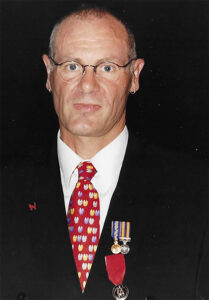 In June 1997 I began working as the PSB Co-Ordinator for PLWHA (NSW), and at that time my health was up and down while dealing with annoyingly odd medical issues that cropped up frequently, as well as navigating varying treatment difficulties. I thought I dealt very well with all of this and had the attitude that if something was wrong with my health, then I wanted to know exactly what it was so that I could get on with whatever needed to be done to fix it.
In June 1997 I began working as the PSB Co-Ordinator for PLWHA (NSW), and at that time my health was up and down while dealing with annoyingly odd medical issues that cropped up frequently, as well as navigating varying treatment difficulties. I thought I dealt very well with all of this and had the attitude that if something was wrong with my health, then I wanted to know exactly what it was so that I could get on with whatever needed to be done to fix it.
I was very successful with this approach and had it not been for the ongoing assistance and support of the organisation’s Board, staff and clients, I most likely would have thrown the towel in. I had the privilege to be on the Board as Treasurer from August 1996 to January 1997. I will talk more about the PSB and some of the project’s highlights in the June Talkabout edition.
Sleaze Ball in October 1997 was a total disaster for me, after bumping my left knee while putting together a new bed earlier in the day. Nick, Jon, Tony, and I ventured off to the showground as planned; however, my knee became painfully hot and after several hours was badly swollen. I was unable to walk (or dance) and was forced to sit the rest of the event out on the sidelines trying to capture my friends enjoying themselves. The next morning, I was carried out to a taxi and taken to St. Vincent’s Emergency where several needle biopsies failed to draw any fluid from my knee. I was admitted to Ward 17 South because I was HIV positive and not allowed home for two weeks. Nine days after being admitted, pathology results revealed that I had a Staphylococcus G infection called Patella Bursitis with Cellulitis.
The day prior to my discharge Dr Andrew Carr came to see me, because he was not happy with my current antiretrovirals and wanted to arrange a blood analysis test from RPA and then review my medications. Two weeks later I had an appointment with Andrew in his clinic at St. Vincent’s, and was told to stop taking all antiretrovirals immediately as the RPA test had not come back and he was considering repeating the analysis test again. Another two weeks later, Andrew wanted me to recommence the medication regime which I had been on four months previously.
By November 1997, despite the best care and good intentions of both Doctors Carr and Pethebridge, I felt I needed a new doctor who could provide me with a more radical approach and a new treatment direction so I transferred my care to Dr Cassy Workman in Surry Hills.
My first appointment with Cassy lasted two hours. My initial medication burden was 37 pills a day and I was worried what that would do to my liver. Cassy assured me that my LFTs were high but not abnormal, and I would be able to reduce my medication burden once my viral load dropped to undetectable levels. While waiting for a break from declining viral load results, I had the opportunity to volunteer for several months making the float and props for the PLHWA (NSW) 1998 Mardi Gras entry called Dick van Dykes on bikes with Mary Poppin’ Pills. I was also one of the thirty Dick van Dykes on Bikes who participated on the night. While moving up Oxford Street, Mary who was sitting atop a makeshift chimney would proclaim:
“A spoonful of protease inhibitors makes the viral load go down, the viral load go down.”
The night was a huge success and a lot of fun (Talkabout Cover No. 85, April 1998).
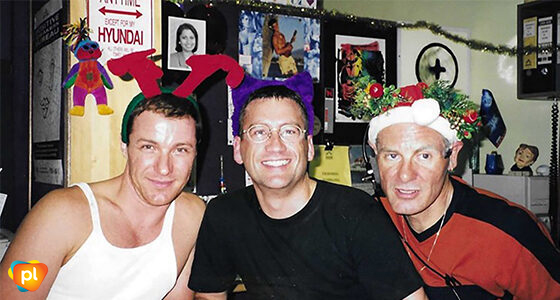
On 25th May 1998 Cassy told me that I had an undetectable viral load, but sadly the decrease in medications never eventuated. Despite that, I was over the moon and remained on this huge medication regimen until the end of 1998.
Eight days later, my joy was shortlived due to receiving a diagnosis for my first AIDS-defining condition, progressive cutaneous Kaposi’s Sarcoma (KS). I knew three people that had this nasty cancer, and secretly hoped it would not happen to me. So, when I discovered the first purplish blister type lesion in my groin, the second week into my six week European holiday earlier in the year, I instinctively knew that I had developed KS.
By the time I arrived back in Australia I had sixteen lesions in my groin and on my torso, and could not wait three more weeks for Cassy’s return from holidays to have my suspicions confirmed. Professor Michael Kidd therefore arranged for skin tests and biopsies, which unfortunately then confirmed KS.
A follow-up chest x-ray thankfully confirmed that my internal organs were not affected. I considered this to be a blessing, as that would have been potentially fatal. I was then placed under the care of Dr David Goldstein at the Prince of Wales (POW) Hospital Oncology Unit, who suggested systemic chemotherapy treatment with Stealth Liposomal Doxorubicin (Dox-SL), which at that time was an experimental drug, and only available to patients as an investigational drug under the Special Access Scheme for compassionate use. After being advised of potential side effects and the process for proceeding with Dox-SL, I gave my signed consent. This was my second experimental form of treatment after the P24 research trial in 1994, and so in June 1998 I began the first round of chemotherapy (eight cycles) over the next three months, after which I had severe bruising on both legs and smaller lesions on my right leg.
Two months later, an ultrasound revealed deep vein thrombosis (DVT) in the femoral vein of my right leg. Dr Goldstein thought that the clot was associated with KS in my lymph nodes which was causing the bad bruising on my lower right leg, and I spent the next three months doing my own subcutaneous injections to thin my blood.
In the next edition I will write about the period 1999-2004, and struggling with lipodystrophy, more KS and Thalidomide, not going on my Poland and USA trip, PSB highlights, and how I thought I was going to die.
Paul R Maudlin OAM, JP
Published in Talkabout #202 April 2022

